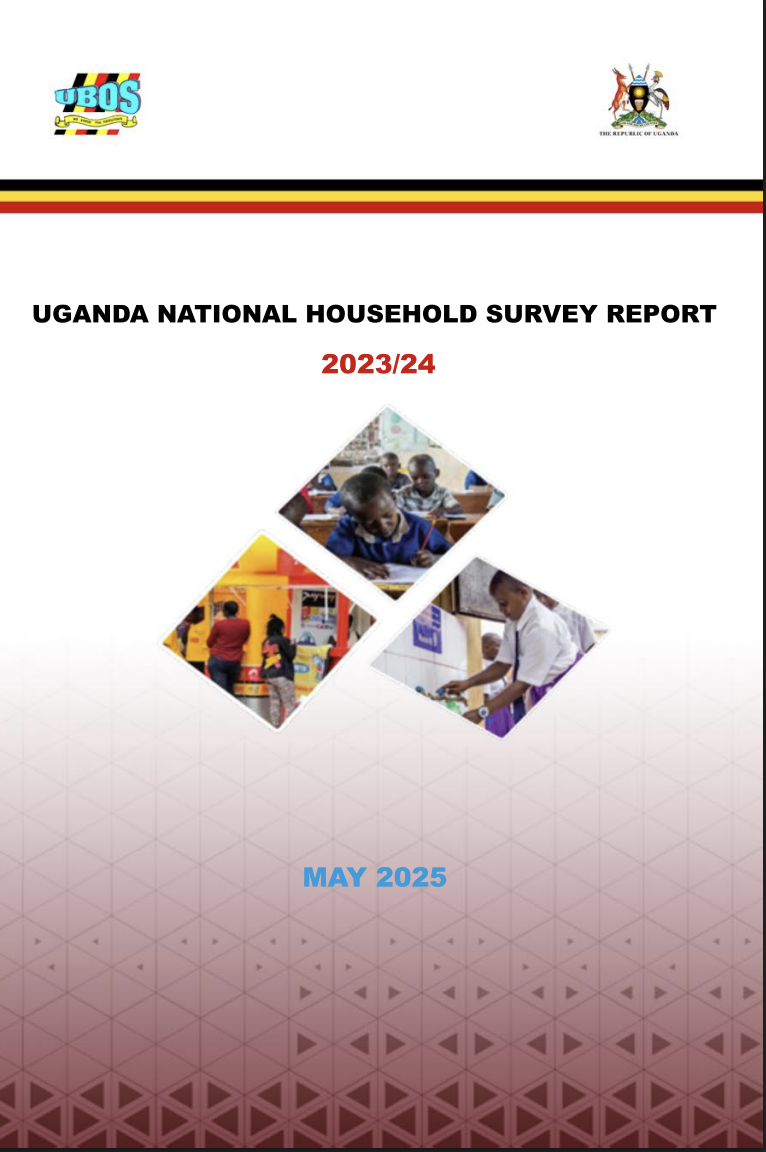2023-2024 Uganda National Household Survey Report
This note summarizes the Uganda National Household Survey (UNHS) 2023/2024, conducted by UBOS with support from UNHCR (through UNFPA) and funded by the Joint Data Center (JDC) with a contribution of USD 215,812 to facilitate the inclusion of refugees in the survey. The funding supported enumerator training, data collection from sampled refugee households using Computer-Assisted Personal Interviews (CAPI), data cleaning and analysis, and dissemination of key indicators.
This marks the first time refugees have been included fully in the Uganda National Household survey. And it’s the first time, this happened with a representative sample across three strata: Southwest, North/West Nile, and Kampala.
The report includes refugee data across various chapters covering household composition, access to services, education, health, water, sanitation, and energy. Chapter 9 is specifically dedicated to refugees and host communities, offering a detailed summary of key indicators.
Summary of key findings on the dedicated refugee chapter:
1. Household Composition
- Refugee households had a larger average size (5 persons) than host communities (4 persons), with the Northern region reporting the highest (6 persons).
- 58% of refugee households were female-headed, compared to a male majority in host communities. In the North, 74% of refugee households were female-headed, while the Southwest showed near gender parity.
- Nearly half (48%) of refugees aged 15+ had never been married, compared to 36% in host communities. This was highest in the North (50.1%).
2. Education Enrolment
- Primary Education: Gross enrolment rates (GER) were similar in the North (Refugees: 142%, Hosts: 141%), but net enrolment rates (NER) favored hosts (85% vs. 72%). In the Southwest, refugees had higher GER (129%) and NER (74%) than hosts.
- Secondary Education: Enrolment was low overall. In the North, refugee GER (29%) exceeded hosts (20%), but hosts had higher NER (9.4%). In the Southwest, hosts outperformed refugees in both GER (24% vs. 13%) and NER (14% vs. 8%).
- Gender Parity: Minimal gender gaps at primary level. At secondary level, disparities emerged—favoring girls in the North (GPI: 1.35) and boys among refugees in the Southwest (GPI: 0.84).
3. Health Status and Care-Seeking
- Illness/injury prevalence was similar: 19% among refugees, 18% among hosts. The Southwest reported higher rates (22%) than the North (17% refugees, 15% hosts).
- 81% of refugees and 82% of hosts sought care, primarily from government facilities (refugees) and private clinics (hosts).
- The main reason for not seeking care was mild illness (51%), followed by availability of medicine at home.
4. Labour Market Participation
- Refugees had a lower share of working-age population: 33% in the North and 45% in the Southwest, compared to 64% and 70% among hosts.
- Most refugees and hosts were employed in agriculture, forestry, and fishing (67–69%), followed by services.
Refugees earned less: median monthly earnings were UGX 76,000 (North) and UGX 120,000 (Southwest), compared to UGX 296,000 and UGX 168,000 for hosts. - Unemployment was higher in the North (Refugees: 20%, Hosts: 25%) than in the Southwest (Refugees: 11%, Hosts: 4%).
Only 18% of refugee households engaged in non-crop enterprises, compared to 32% nationally. Most operated from home.
5. Access to Energy and WASH Services
- Cooking Fuel: 98% of host households used biomass, while 68% of refugees used briquettes/pellets—especially in the North (90%).
- Drinking Water: 91% of refugee households had access to improved sources, compared to 85% of hosts. Access was highest in the North (98% refugees, 92% hosts) and lowest in the Southwest.
- Sanitation: 40% of refugee households used improved toilets, compared to 52% of hosts. Access was lowest in the Southwest (22%) and North (28%) for both groups.



